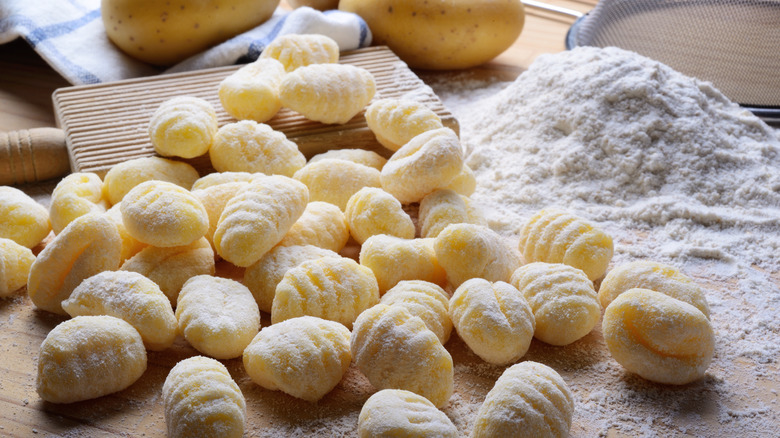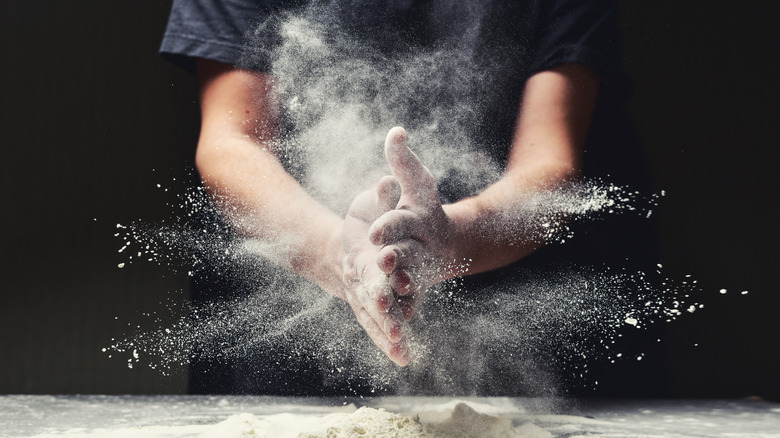The Biggest Mistake You're Making With Homemade Gnocchi
Halfway between pasta and dumplings, gnocchi are one of the oldest and finest comfort foods around. At once solid and satisfying, yet (when made well) strangely light — gnocchi are like savory little pillows for your mouth (it's no wonder that the singular word, gnocco, is a slang term for an attractive man). They've got a great backstory, too, boasting an ancient history that predates pasta, and they can be made using a variety of cooking methods for a range of textures. Gnocchi can also be made with a wide array of ingredients, including pumpkin and beets, per SheKnows.
So it's no surprise that people are interested in making them from scratch: the pandemic boosted pasta consumption throughout the world (per BBM), as well as an increase in at-home cooking — a shift that looks like it's here to stay (per Supermarket News and Food Dive). Gnocchi are also an alluring alternative for those with dietary restrictions; while traditional gnocchi aren't truly gluten-free, their potato base lends them to gluten-free eating more readily than traditional fresh pasta. Another favorite way of making them is even less starchy: with ricotta cheese in lieu of potatoes. While those with a ricotta base are generally referred to as gnudi rather than gnocchi, they're part of the same food family and follow the same basic method.
Use a light touch (especially with the flour)
But like many simple, traditional foods (not to mention fresh pasta), gnocchi aren't always so easy to get right when you're making them at home. You can use the wrong potatoes (russets are best for their high starch content); accidentally include too much moisture (which prevents the dough from holding together) or overwork the dough. The name of the game is getting them light and fluffy, despite their hearty ingredients. It can help to think of gnocchi in the same way you would biscuits: you want your dough to stay sticky, so shape it lightly to keep the finished product from getting heavy and dense. Real Simple suggests that you can even forgo the egg if you're making them with ricotta; while the egg helps bind the ingredients, it also adds moisture content, which means you need to add more flour — which is where most of us meet our gnocchi downfall.
Think of flour as a necessary evil in making gnocchi — it's got to be in there, but easy does it. Fine Cooking, Real Simple, and Italy Magazine all caution on this front. And once you've mastered the art of making these delectable piles of goodness, you're ready for the next challenge: spelling and pronouncing the word gnocchi properly — it's one of the few times to be grateful for autocorrect.

